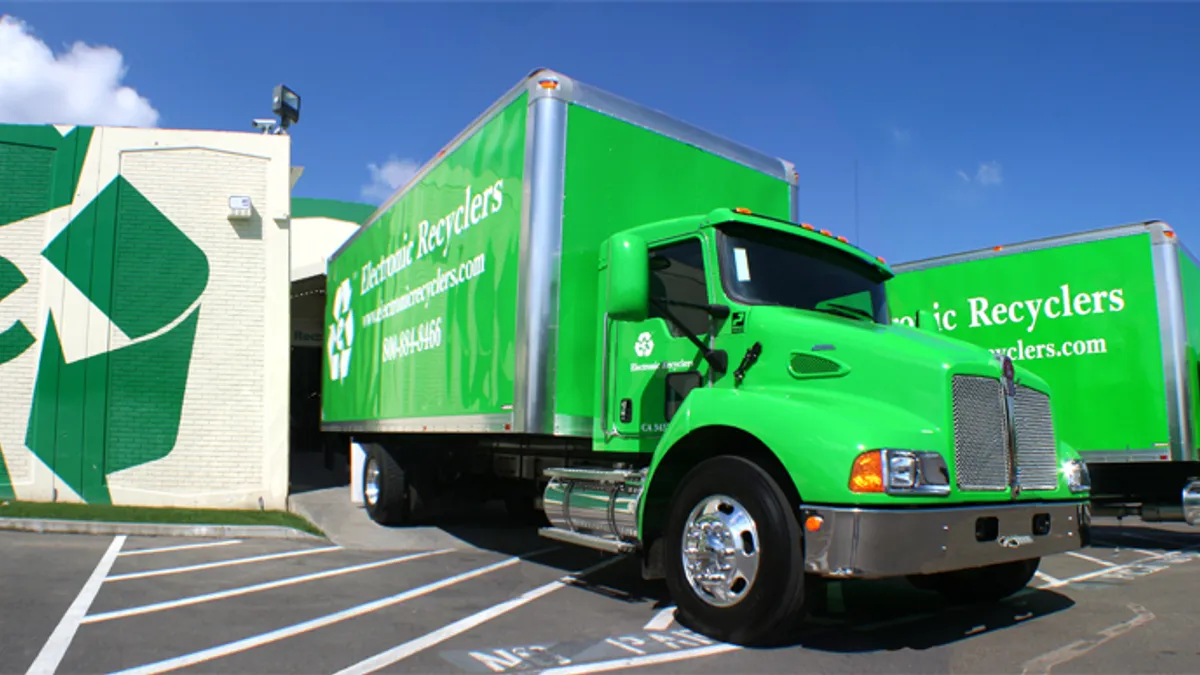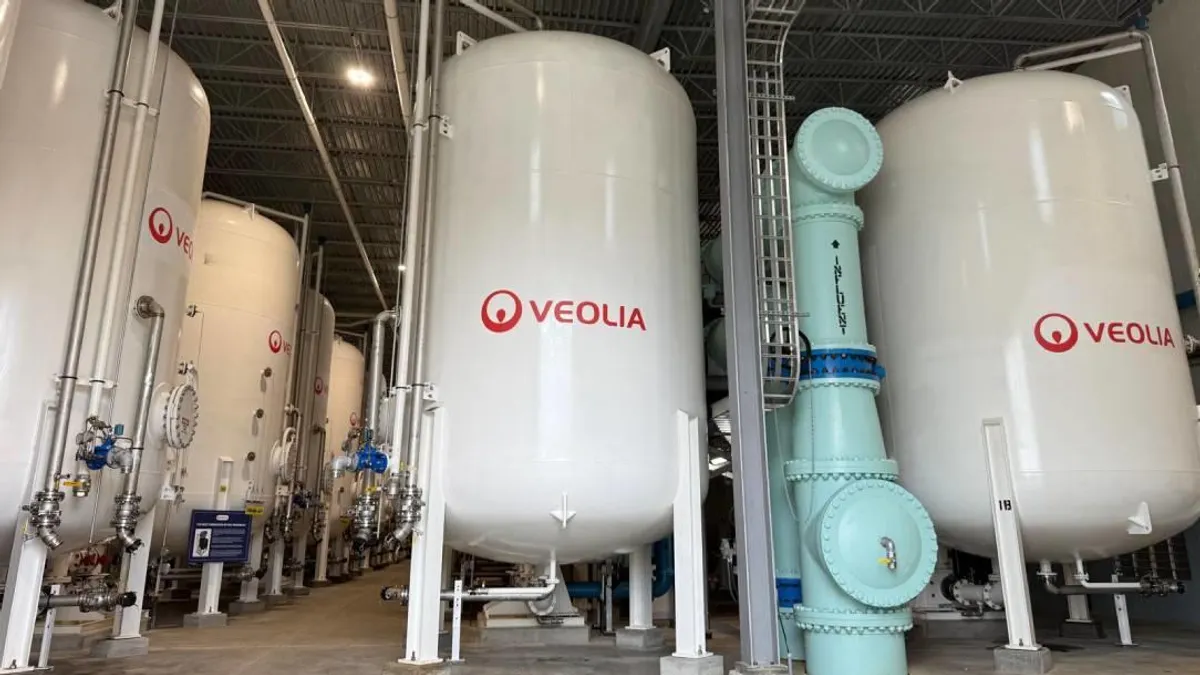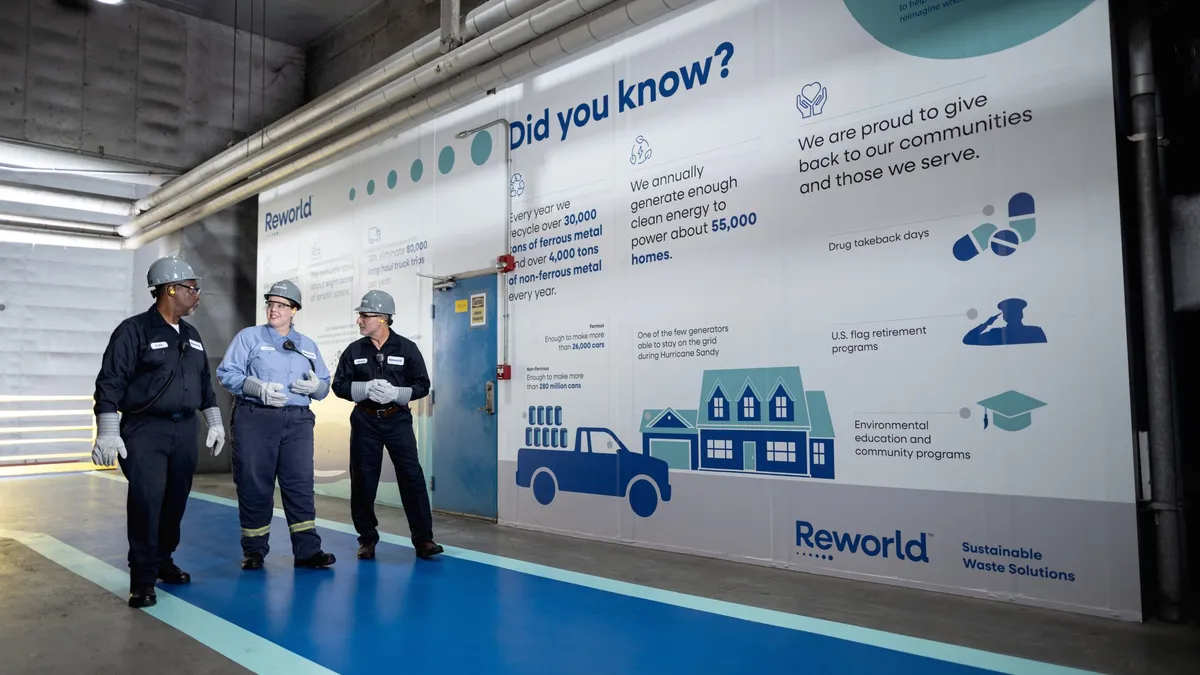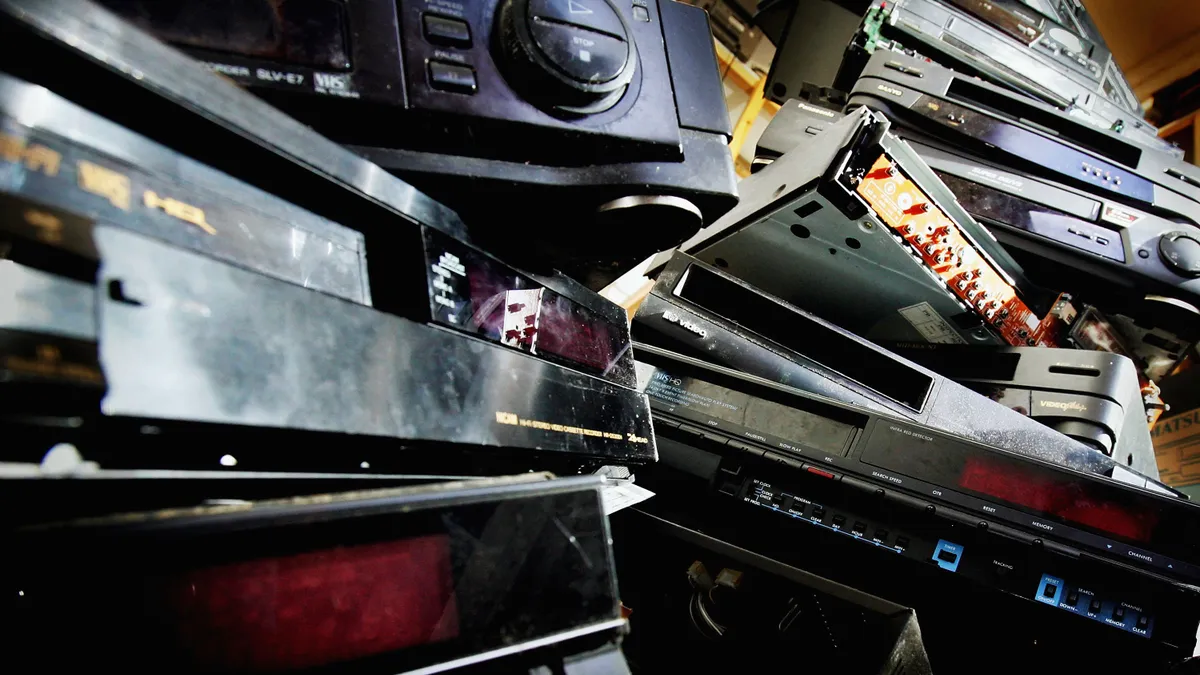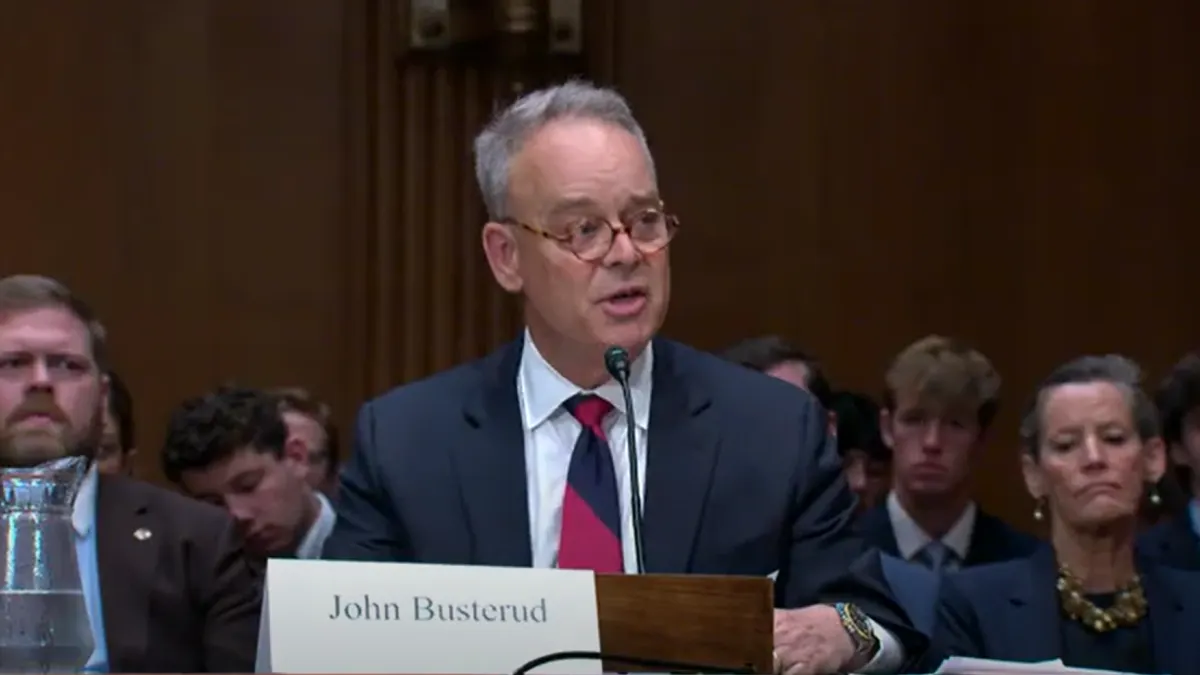To Rheaply, the circular economy-driven startup behind a software platform for physical asset management and resource sharing, the key to making reuse more of a norm is building connections.
The Black-founded business, started in Chicago in 2015 by Garry Cooper, targets the all-too-common problem of unnecessary procurement and waste, which can occur when one part of an organization isn't aware of what another department, or a neighboring business, may have on hand to share or transfer.
According to Garr Punnett, the company's chief of staff and circular economist, who spoke to Waste Dive earlier this month, Rheaply's design is about connecting the “right-hand” and “left-hand actions” within large organizations so they can use materials or supplies they already own rather than leave them to sit in a warehouse or end up in a landfill. Rheaply’s revenue primarily comes from the monthly subscription fee an organization pays to use the platform, Punnett said, as well as fees associated with connecting organizations to enable a larger network of sharing.
Rheaply aims to ingrain circularly-minded operations across a variety of organization types. Its client list ranges from governments to universities to private corporations. Adopters and partners have included the city of San Francisco, Illinois-based pharma company AbbVie, the U.S. Department of Defense and more recently financial software giant Intuit. Rheaply is also part of the Ellen MacArthur Foundation member network.
With Rheaply coming off a win in the "Most Innovative Reuse Company" category at the inaugural National Reuse Awards, Waste Dive caught up with Punnett to discuss its growth, vision for scaling its approach to asset management, and connecting traditionally siloed organizations within communities.
This interview has been edited for length and clarity.
WASTE DIVE: How have the investments in Rheaply in the last couple of years helped the company grow?
GARR PUNNETT: I think of most note would be our recent Series A investment round, where we had an assortment of amazing venture capital funds as well as enterprise funds invest in us [ranging] from Salesforce to Microsoft.
Microsoft’s investments in particular were really focused on carbon reporting. This is a real challenge in the industry. How are we going to focus on reuse in a circular economy, and how does that actually get reported? What is the data that we can collect around reuse, and how impactful is it versus buying something new? A lot of the work that we're doing with those dollars is helping do more research into the data that we're already acquiring and using around reuse, and how can we actually start creating auditable data around our reuse system?
Why that is important is [that] there will be coming a time — whether it is [due to] consumer importance, of which we're already seeing, or public legislation —where carbon will have more and more of an impact on procurement decisions. So if we can start to actually calculate the savings that reuse can have from a cost standpoint and from a carbon equivalency standpoint, that's where the impact associated with reuse and being in a more circular economic framework will take on more importance in the procurement space.
Which policy or cultural shifts have been most transformative in moving circular economy efforts forward?
PUNNETT: Consumers actually care more about the enterprise landscape around us all. And I think it's been that groundswell of support and ambition from many generations — of either people that are sick of the status quo or are really looking to change and shake up the system — that was actually really driving consumer-focused energy.
How policy reacts on the corporate and public levels remains to be seen. I think we're seeing a lot of various governmental actions in different markets. I think we can all look toward the markets that care about that most — you can find them generally on the West Coast and East Coast and then somewhere in between. But when it comes down to it, we have so many policies on the enterprise level that are quite lofty without a sense of direction on how to achieve those ambitious goals. I'm talking about carbon-related goals on the enterprise level, where the market is not ready to actually achieve those goals.
We have a huge push for many enterprise leaders in our economy that use a lot of plastics in their consumer products that are now pushing for recycled content in their products. This is a great example where the actual recycling space is not ready for the amount of demand that is coming its way. The infrastructure around that is not necessarily built up. They're going to be reaching that demand, which is going to be coming pretty soon. So some of these consumer product companies have goals for [2025 to have 100% recycled content] in their products. Some of them are at 2030. But even in those time frames, we are not there.
I think this is what gets to being a more efficient economy when it comes to our recycling, and how are we actually connecting the dots in our different systems? Recycling is kind of the canary in the coal mine: If we don't have a system that's ready for the demand that's going to be put on office-specific plastics ... the most popular and used plastics, we are still not even ready for the demand that's coming.
What are some of the main barriers that still exist to scaling reuse systems?
We are not a connected economy. So we speak about efficiency, we speak about resiliency in our communities. We will not be able to achieve any sort of growth around resiliency or around sustainability or circular economy if we are all just cities of independent parts trying to do our best in our own independent kind of way. Rheaply is trying to build more connections across the small-business community, trying to build more connections across the enterprise community and government community. And we're trying to do that locally.
You go into any city, and there's some sort of legislative effort, there's some sort of enterprise effort, around being more sustainable, being more inclusive around any type of growth for that city. But when you really start trying to piece together how they're designing a platform, how they're designing a product, how they're designing an initiative or a policy — we're not learning from each other as efficiently as we should.
How do you see Rheaply growing or expanding in the years to come beyond the fronts that you're already active in?
For us, it's really about scaling our enterprise footprint. It's our enterprise footprint that really can increase the amount of impact locally on communities. Then once we get more and more supply, it's figuring out how we can address major impacts from these enterprise partners, [and] we can focus more and more on small businesses and mid-market businesses as well.
This is a common tech term, but it has a different meaning for us — as we drive our 'ecosystem' growth, which is connecting more enterprise to more small business to more government, we can increase our footprint in the nonprofits, the school systems, actually really increasing the impact locally for those types of organizations. Our ecosystem terminology's kind of fun to use, because while it was more popularized by marketplaces like Apple's App Store, ours is really focused on kind of [a biomimicry.]
The ecosystem approach is really focused on how there are large companies and small companies and [midsized] companies and then other types of organisms in each one of our cities. How we're connecting them all together makes for a very healthy ecosystem around reuse. So we're going to be driving more of our technology to be focused on reuse, more focused around recycling and material commodities, so that we can actually start driving more and more action [across our entire ecosystem].








